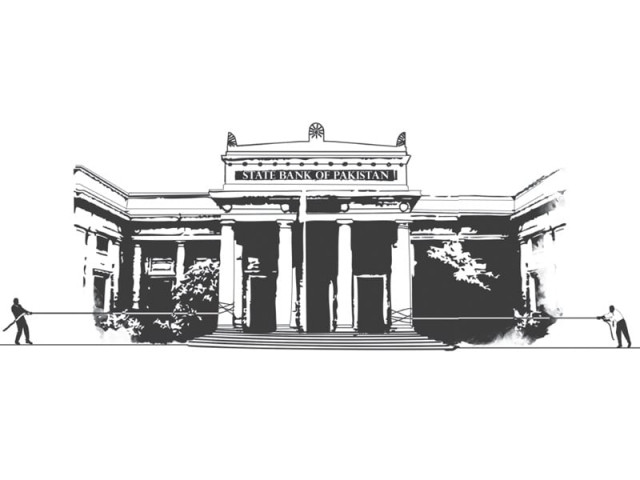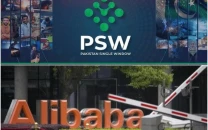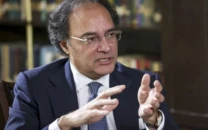View from McLeod Road: State Bank continues to squeeze banks
Hopes to make govt lending unprofitable, forcing banks to lend to private sector.

If the borrower does not quit the narcotic of easy money, make it painful for the lender. That seems to be the motto at the State Bank of Pakistan (SBP), which appeared to make it a point to say how much the most recent monetary policy announcement would squeeze the banks in the press release it issued along with the statement.
In recent months, the State Bank has been criticised for not standing up to the finance ministry and playing its traditional role of keeping a check on the government’s fiscal policy, which most economists now describe as nothing short of reckless.
Evidence from Treasury bill auctions suggests that high interest rates were beginning to have at least some deterrent effect on the government’s willingness to keep borrowing to pay its bills, rather than raise tax revenues by going after tax evaders. But that effect was relatively limited. Instead of decreasing its borrowing, the finance ministry simply borrowed for shorter durations to pay the lowest possible interest rate, and kept continuing to monopolise the market for borrowing. This had the rather dangerous, and potentially disastrous, effect of exposing the federal government every three months to a massive multi-trillion-rupee refinancing risk. Yes, that is how crazy the finance ministry’s actions have been: they simply do not seem to care about consequences.
Faced with such a scenario, SBP Governor Yaseen Anwar faced three choices: he could either continue to try playing the Pakistani version of Paul Volcker (the legendary US Federal Reserve Chairman who is credited with taming stagflation in the 1980s), and failing; he could go out like a martyr like his predecessor Shahid Kardar; or he could try something new. He appears to have favoured the third option.
Before Anwar, the SBP had essentially been playing a losing game of fiscal chicken with the finance ministry. However, the new governor seems intent on changing the rules of the game: since the finance ministry is willing to tolerate an absurd amount of fiscal pain to avoid making tough political choices – like cutting subsidies, for example – why not make it tougher on the lender instead?
Over the past several years, Pakistani banks have employed a very cosy – and some would say lazy – business strategy: they keep raking in cheap deposits and lend them out risk-free to the government at high interest rates. Why lend to a business at 14% interest with a chance of default, when the government will pay you 12% risk-free?
Since the beginning of this year, the State Bank has begun making that trade a little less comfortable. First, it increased the rate banks are required to pay out to depositors on savings accounts – making the banks’ source of funding more expensive. Then it began cutting interest rates, making lending to the government less profitable.
This goal was stated far more explicitly in Friday’s monetary policy announcement: “The resumption of monetary easing, in this environment, was deemed necessary to influence the behaviour of borrowers in the private sector and banks to step up efforts to improve their intermediary role.”
That’s central bank-speak for: “We want the banks to finally do their job and begin lending to the private sector to actually help grow this economy.”
There is absolutely no guarantee, however, that this approach will work; indeed, most analysts think it won’t. BMA Capital issued a note to its clients on Friday saying that the State Bank will fail because there is no real appetite for borrowing in the private sector and that the government has very few other options to borrow from.
But what analysts often forget is that nothing else has worked either. And that the State Bank threw in a nice little monkey wrench this time: it will force banks to pay a higher interest rate if they access the overnight reverse repurchase market more than seven times a quarter, making that cheap source of liquidity just a little more expensive and forcing them to find better sources of funds and profits.
That part was actually highlighted in bright yellow in the press release the State Bank sent out. Not only do they want to bring the pain to the banks, they want everyone to know that they are doing it.
Say what you will about Yaseen Anwar, he is not afraid of taking the banks on.
Published in The Express Tribune, October 6th, 2012.



















COMMENTS
Comments are moderated and generally will be posted if they are on-topic and not abusive.
For more information, please see our Comments FAQ